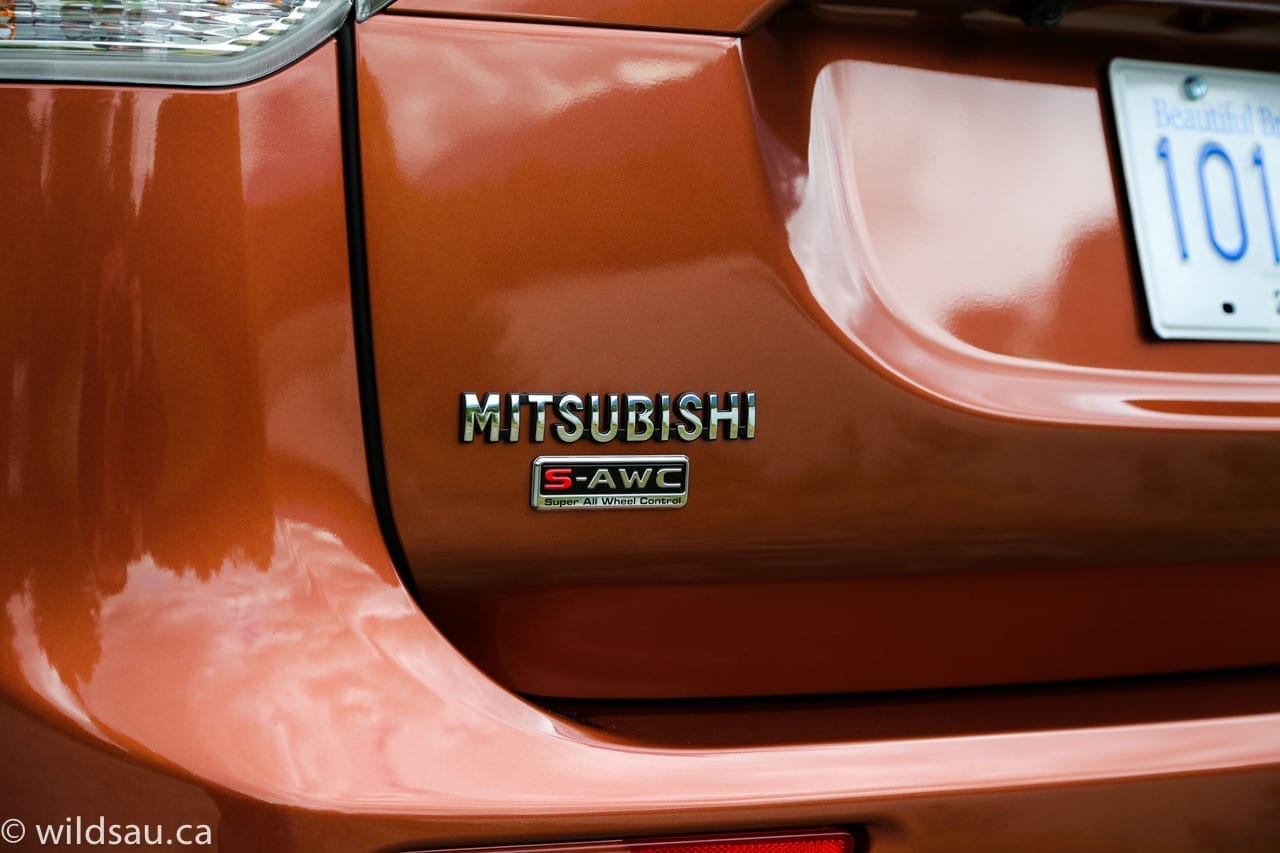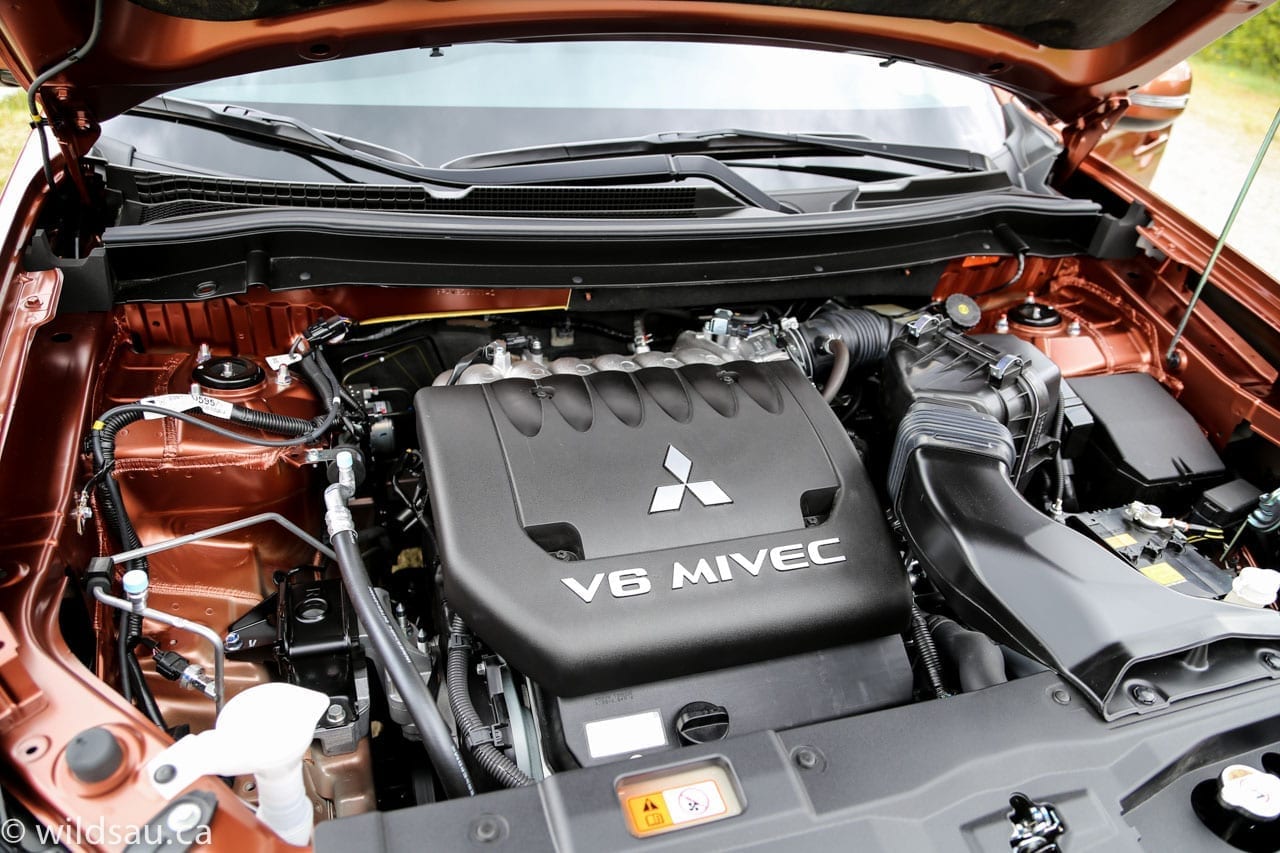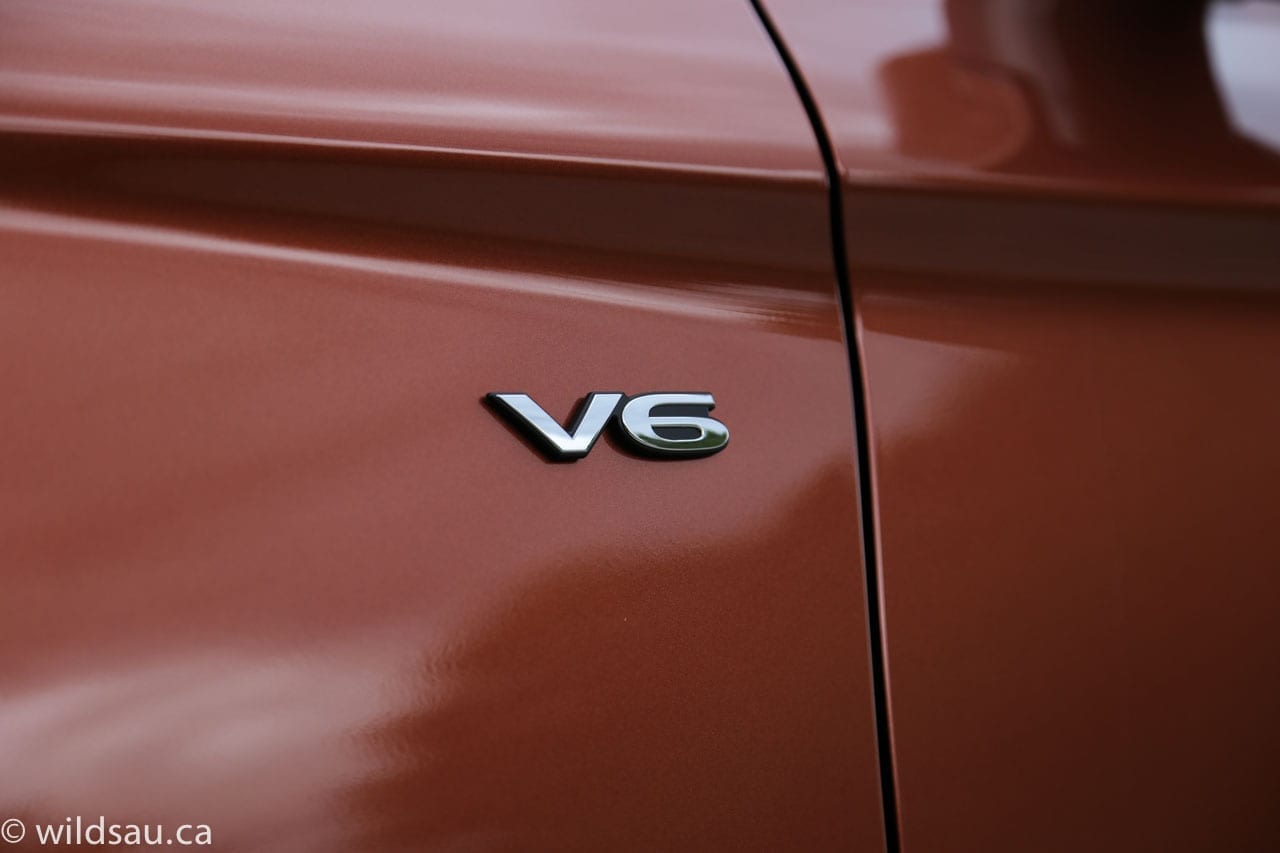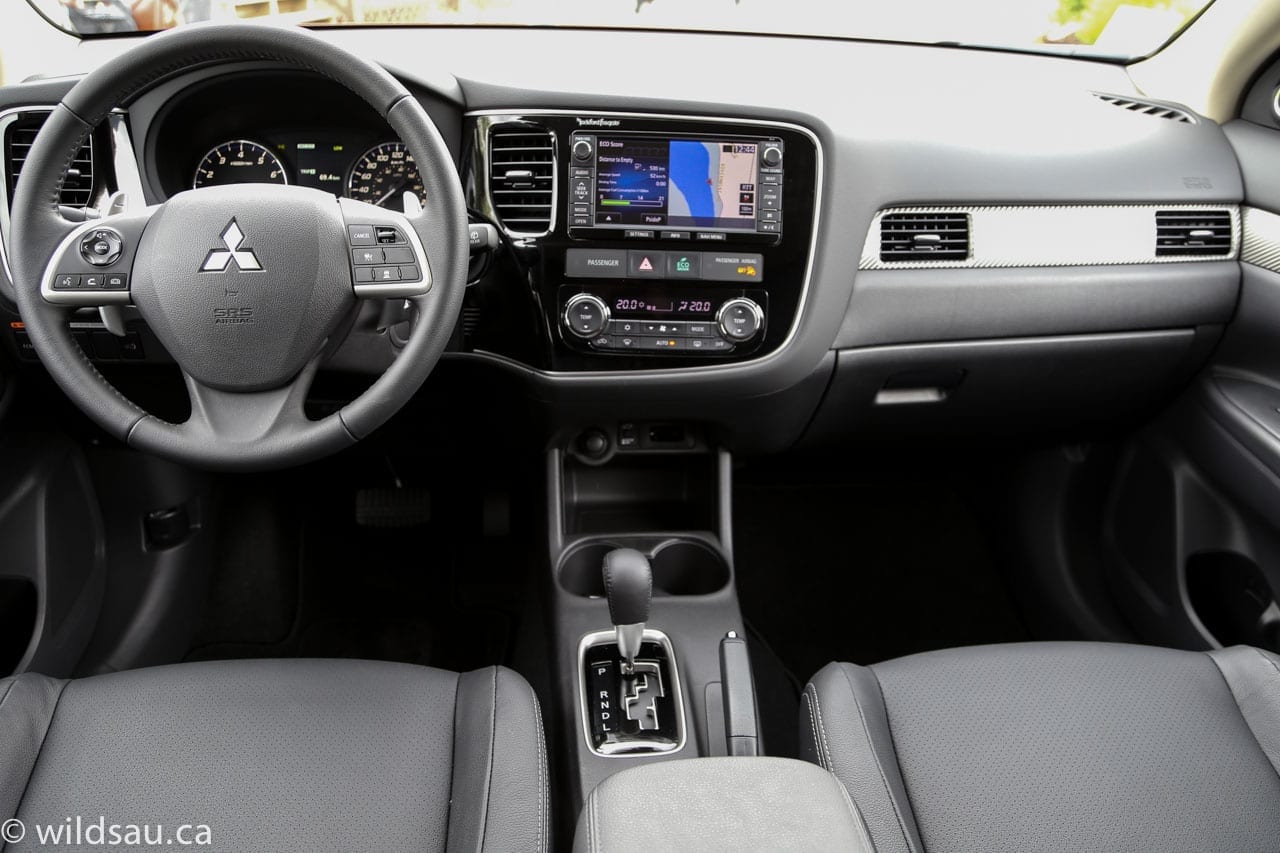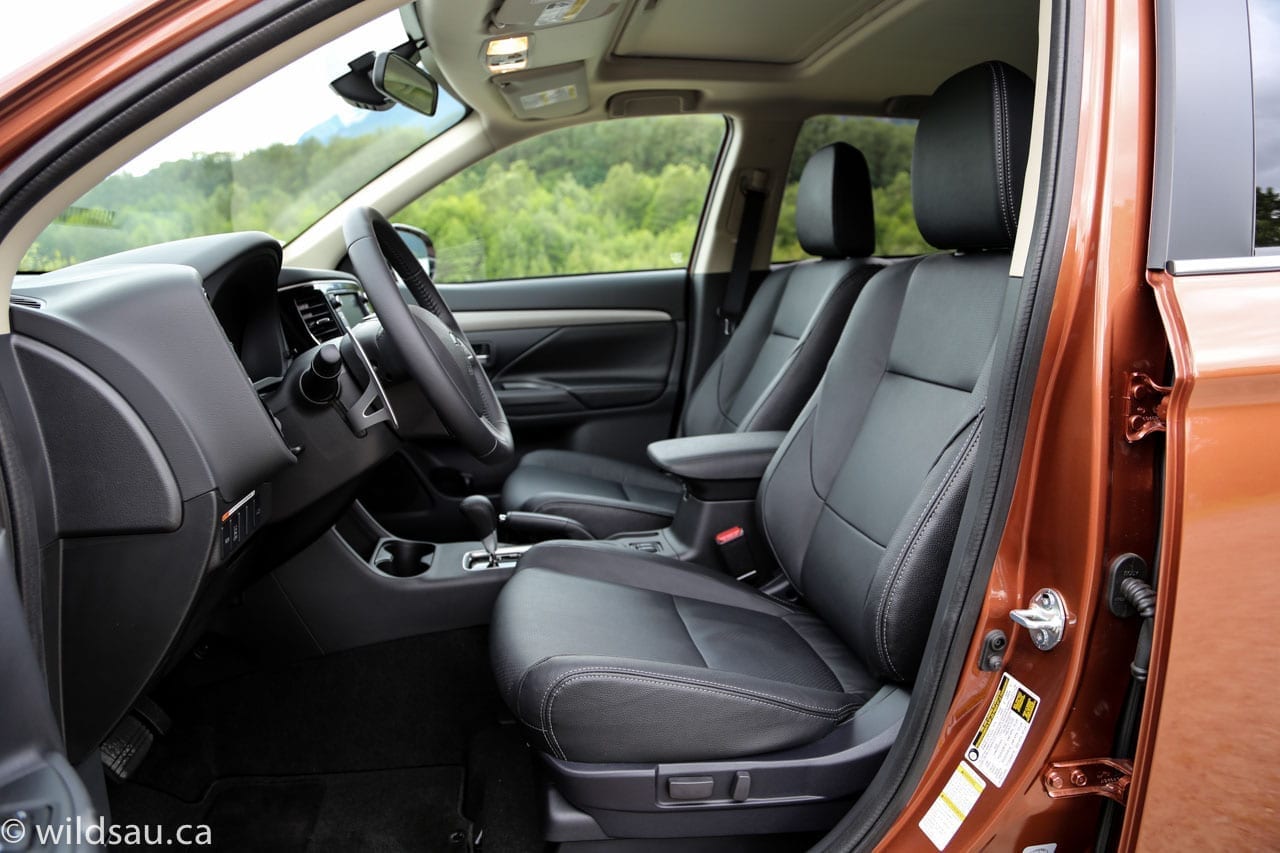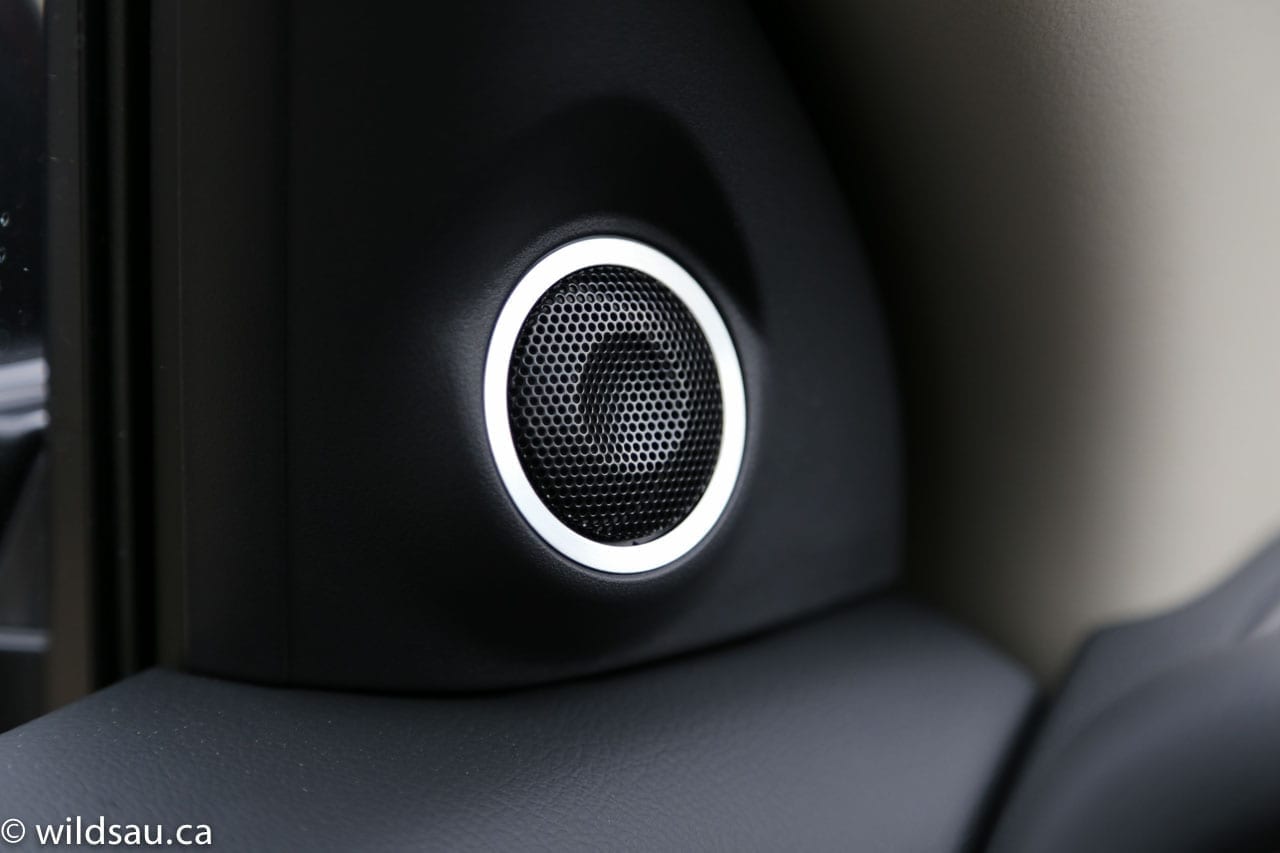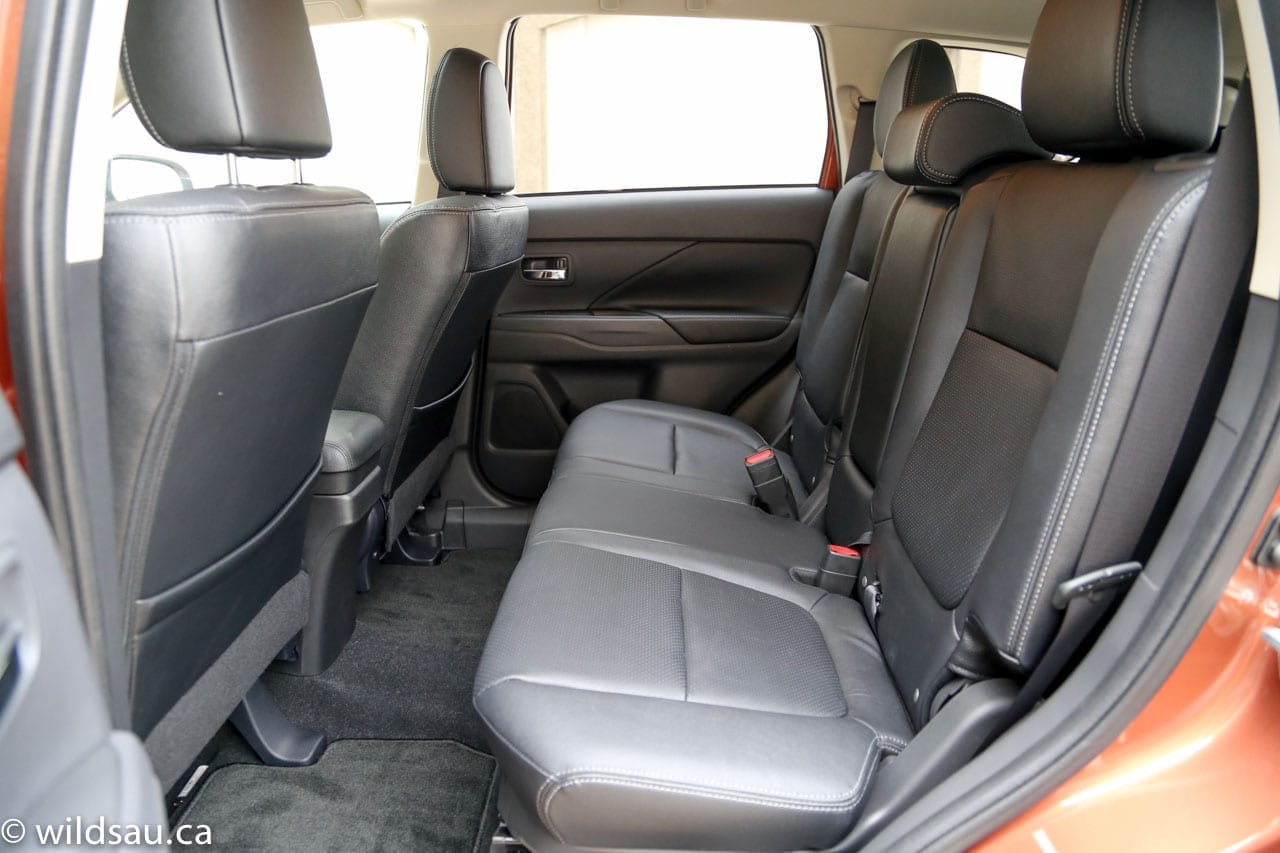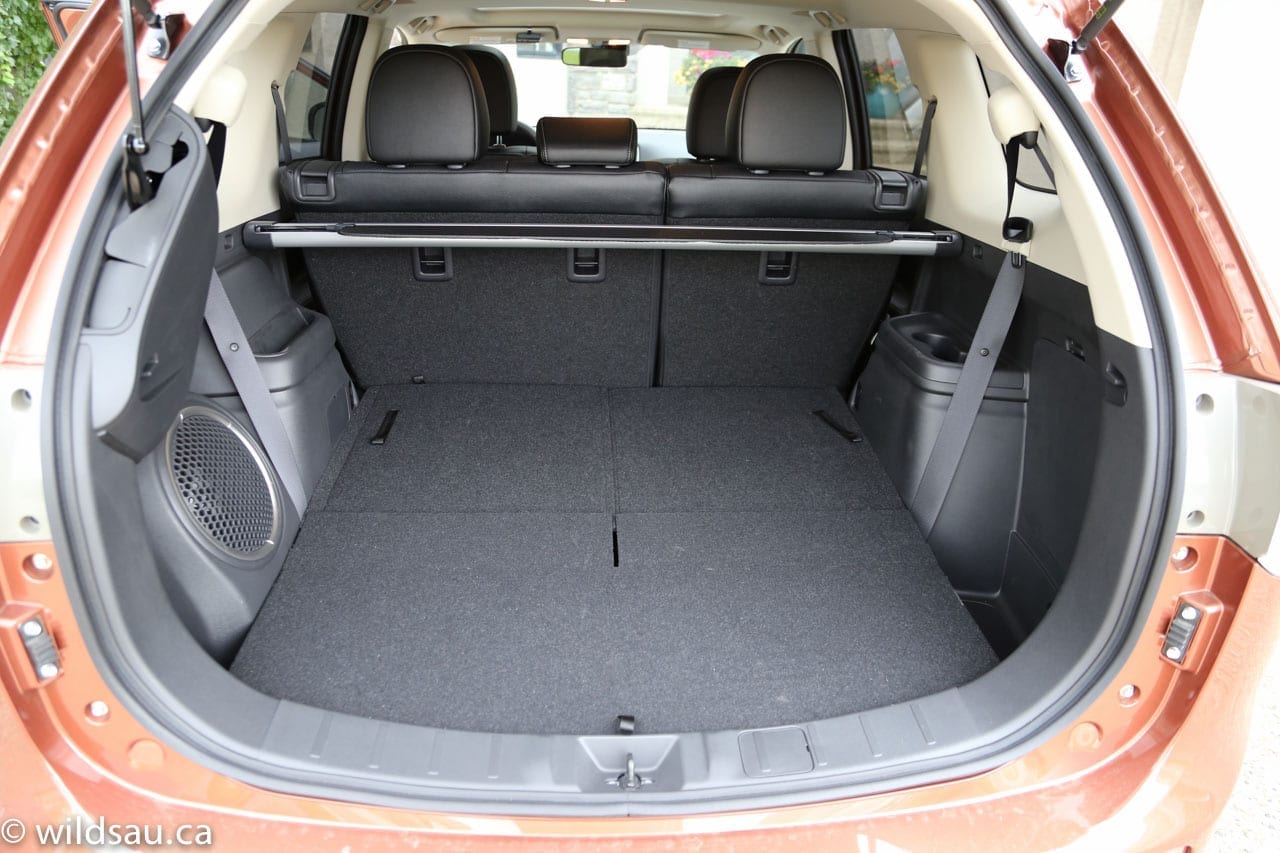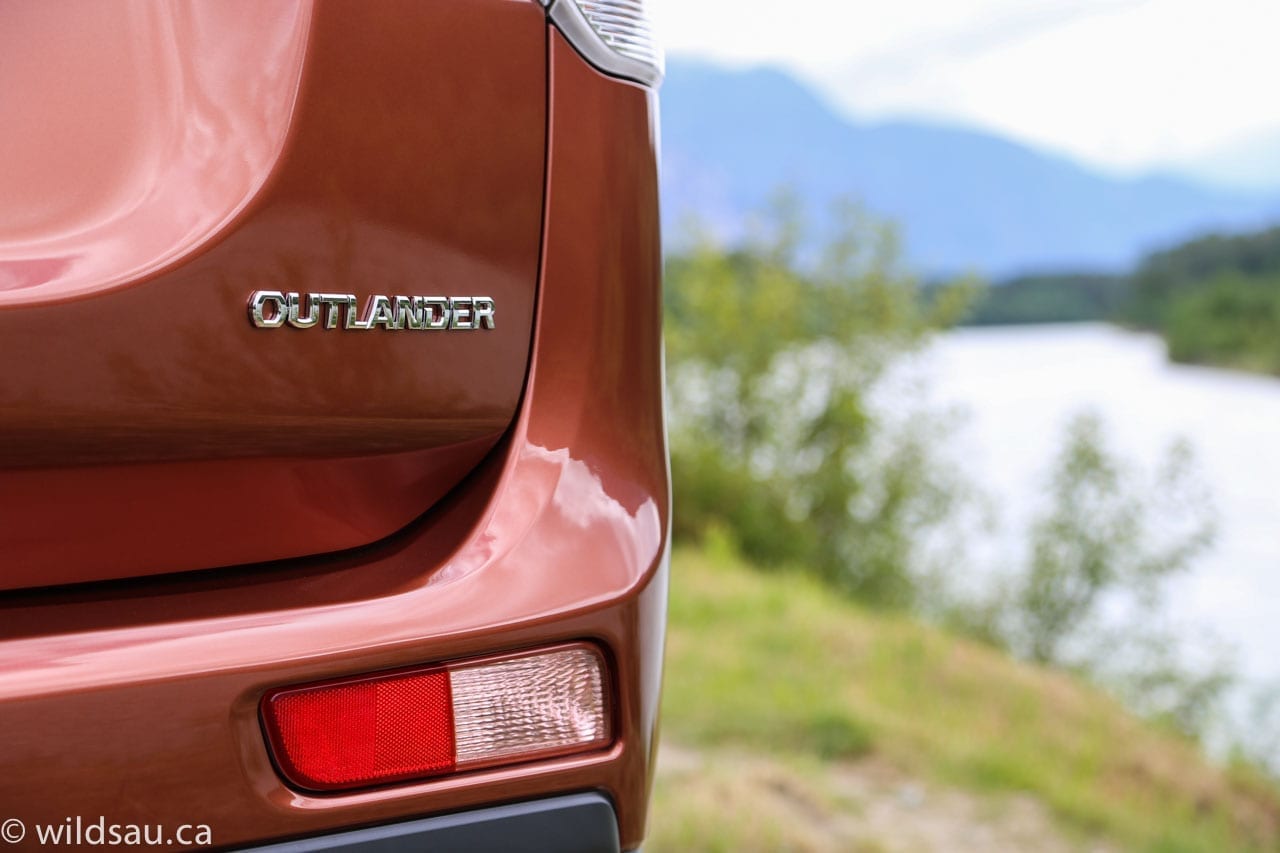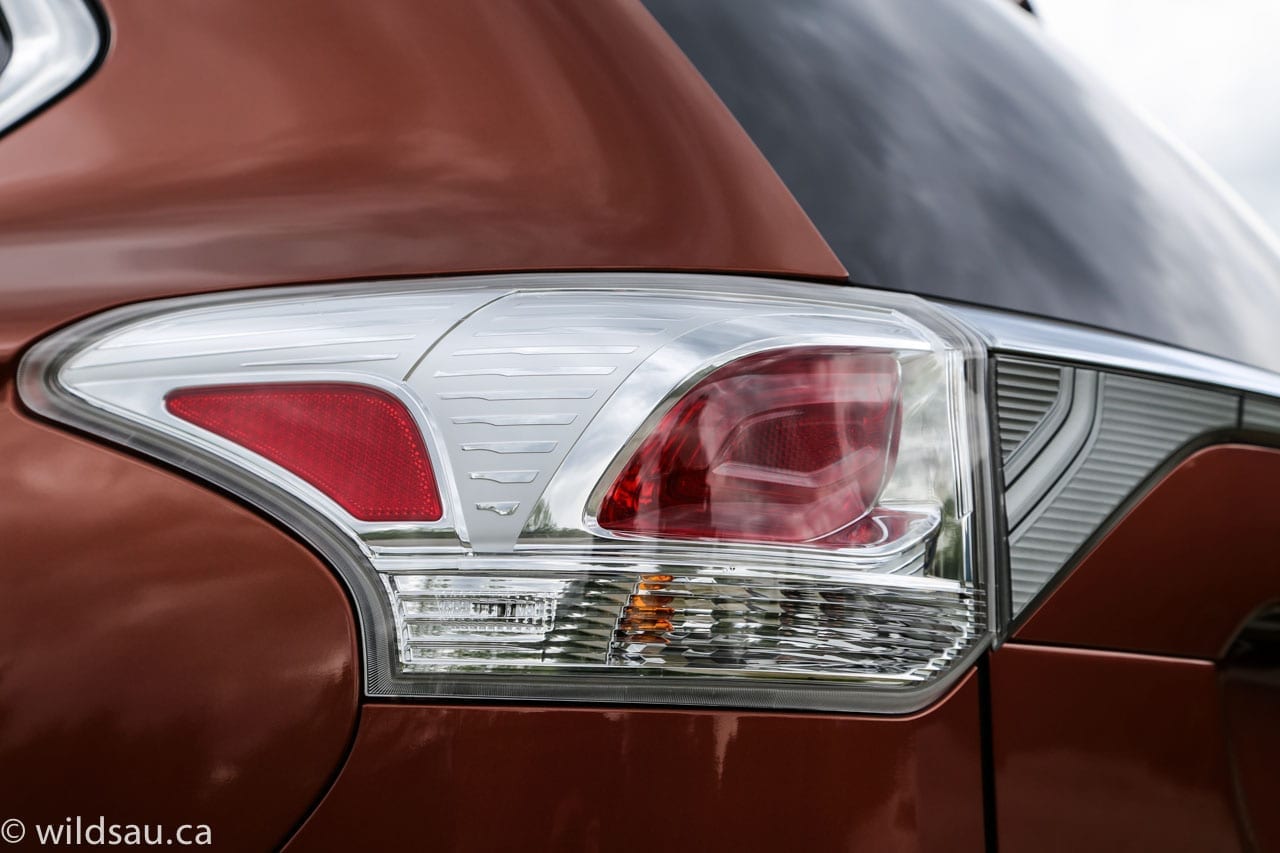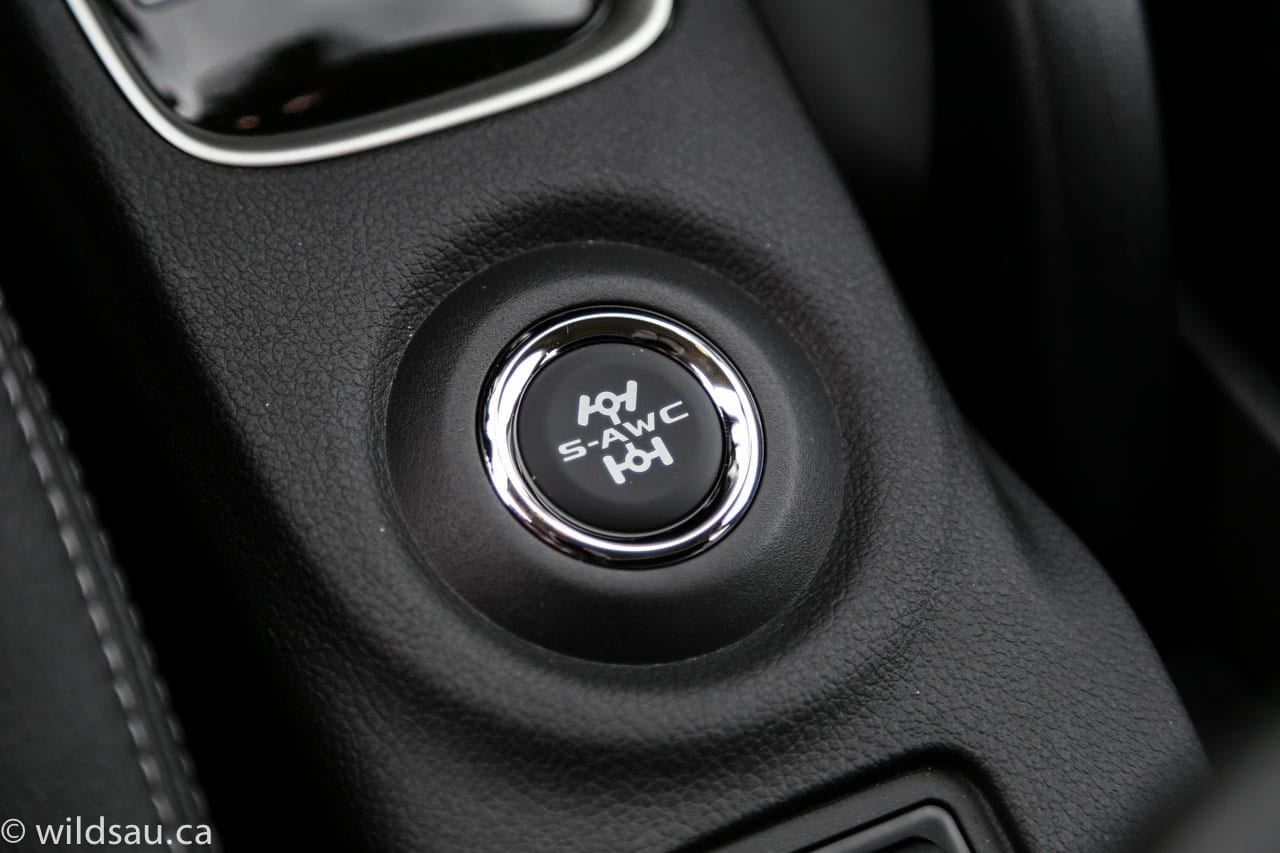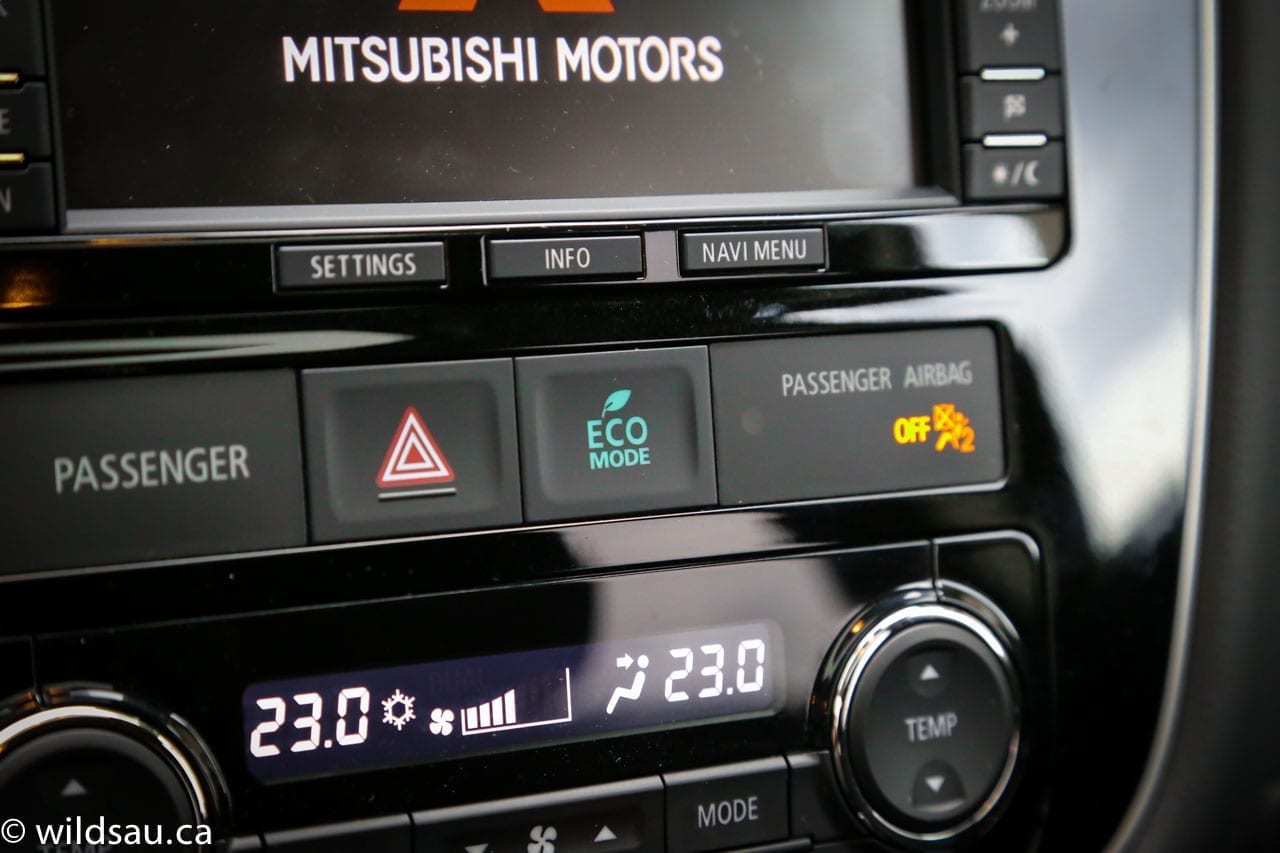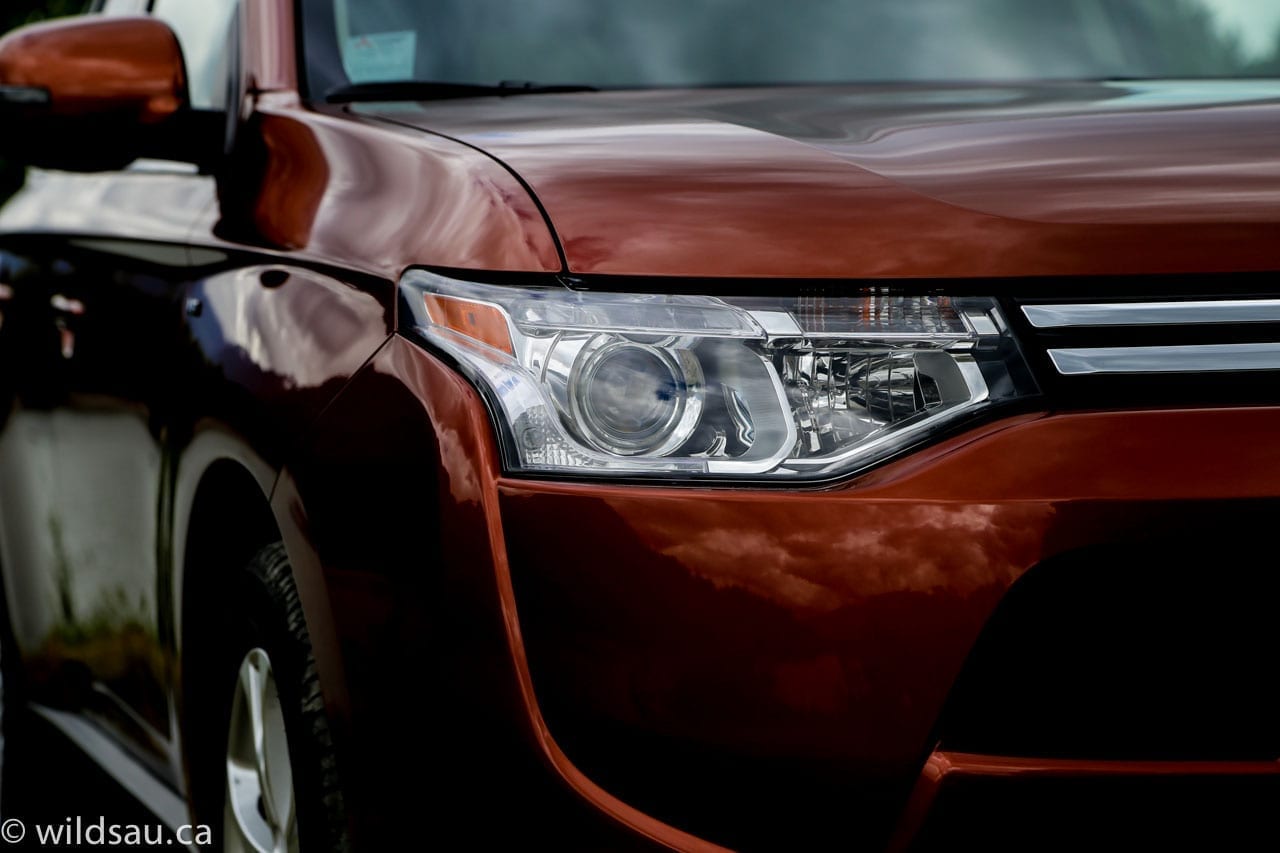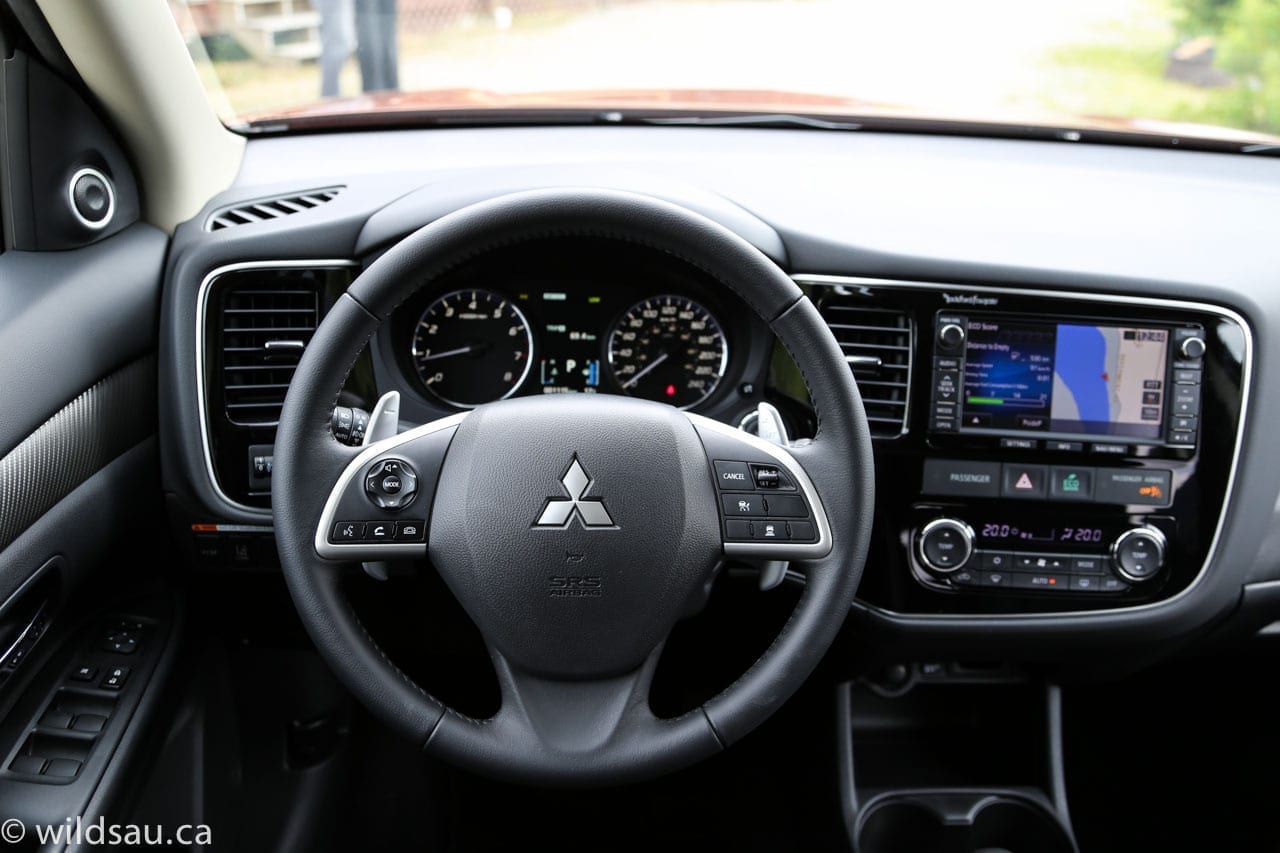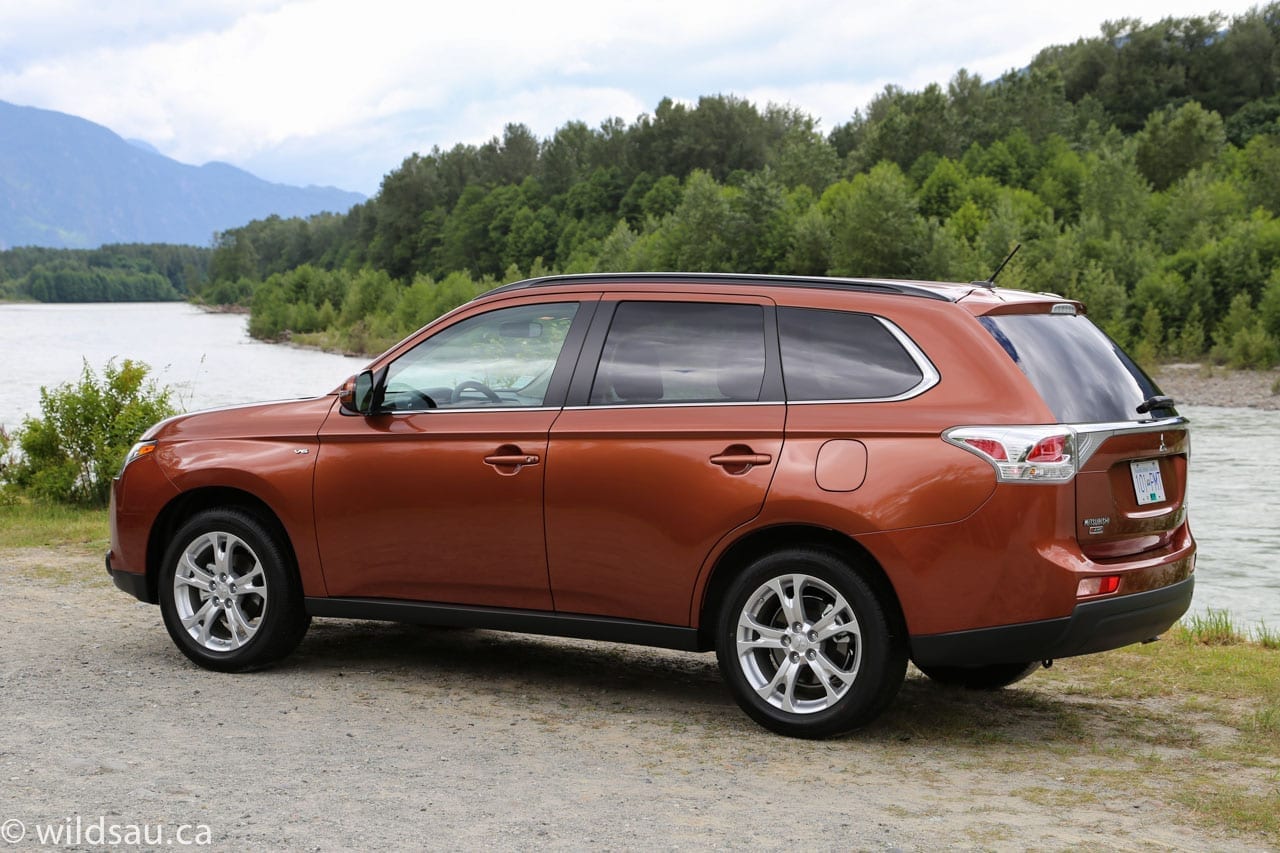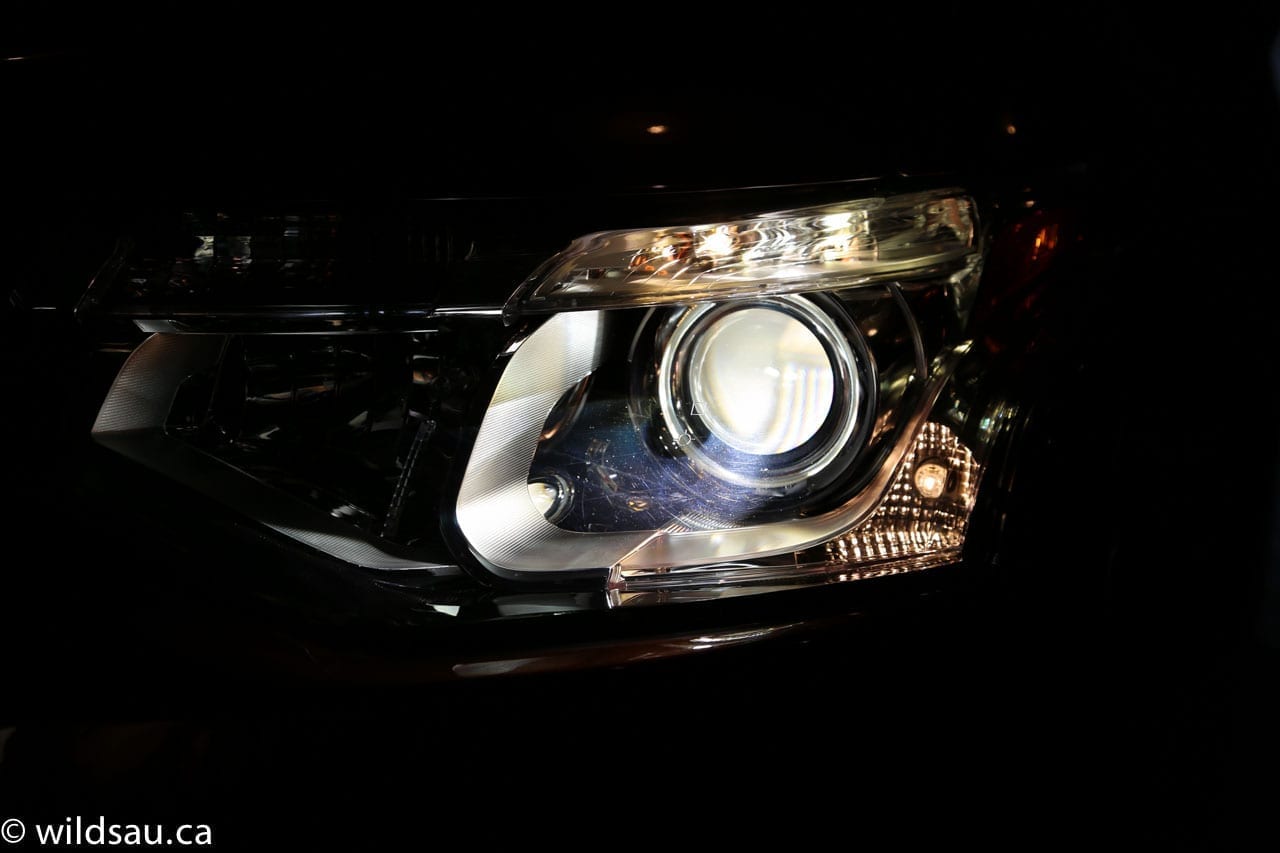Not long before I got this vehicle for a week, I was able to test it out briefly in B.C. in a much more picturesque location. Check out my adventures here if you’re interested. Keep on reading for a more in-depth review of the Outlander.
Pricing: 2014 Mitsubishi Outlander GT S-AWC
Base price (GT S-AWC): $35,998
Options: $2,730 Navigation package
Freight: $1,700
A/C and other taxes: $100
Price as tested: $40,528
Exterior
There is some controversy around the new Outlander shape. It’s certainly less controversial overall, since it has become significantly more generic. The previous generation had the shark-mouth grille which made its way through Mitsu’s line-up from the Evo.
The grille is completely different, and everything seems much less squared-off. Up front there are HID headlights and the shape seems more tail heavy with a bit of a bubble butt back there. Is it distinctive? Nope. Will it get second looks from many? Nope. Is it pretty? Not particularly. But it won’t offend anyone either, and so I suppose it’s a way to slide into the mainstream. For better or for worse.
I did like the 18″ rims with meaty-looking 225/55 rubber.
Under the Hood
There’s a new 3.0-litre V6 here. It puts out 227 horsepower at 6250 RPM and 215 lb.ft of torque at 3750 RPM. Those numbers seem a bit paltry by today’s standards, but those horses only have to drag 3571 pounds around.
The power makes its way through a 6-speed automatic transmission to all four corners through Mitsubishi’s top-of-the-line S-AWC all-wheel drive system, which moves torque around to where it’s needed – front to back and side to side.
Fuel economy is rated quite well at 10.1 L/100 km (23 mpg) in the city and 7.1 L/100 km (33 mpg) on the highway. I ended up averaging an impressive 11.1 L/100 km (21 mpg) over my week with it, which was mostly city driving, a few freeway cruises and a jump onto the highway.
The tank holds 60 litres – premium fuel is recommended but not required.
Interior/Tech/Convenience
The interior was given as much attention as the exterior – nothing was left untouched. Though the styling is simple and is comprised of basic lines, it does the job well. Ergonomics are fine, and overall, it’s a massive improvement over the last model. The materials too – there are plenty of soft touch plastics around cabin and fit and finish is pretty good. There are a few gaps between interior panels but it’s good.
The cabin feels roomy and headroom is good (I’m 5’10”).
The heated leather seats are quite comfortable but strangely (at this price) only the driver’s seat is power adjustable.
Ahead of you is a nice steering wheel with media, phone and cruise controls. The gauges are simple – they’re separated by a sharp, easy-to-read driver information screen. It allows you to cycle through an instant eco gauge, fuel range, average fuel economy, average speed, an eco leaves screen and two trip meters.
At the top of the center stack is a touchscreen. It’s good but not great. I didn’t particularly like the small hard buttons around edge of the screen – they’re all flat and you have to look close to discern which functions they control. It handles the phone, audio and navigation for your Outlander. Music sources include AM, FM, satellite radio, CD, USB and Bluetooth streaming audio and the 710-watt Rockford Fosgate system sounds pretty darn good! Below that is a dual-zone auto climate control.
The center console is home to two cupholders, the gear selector, a parking brake lever and the S-AWC button, which controls your all-wheel drive modes. I’ll get to that later.
Entry is keyless and there’s a push-start ignition. Driver assistance technology is quite solid in this trim, offering lane departure warning, forward collision mitigation and adaptive cruise control.
Rear Seats
The second row has three seats, each with a headrest and a seatbelt. The seats recline and also slide fore and aft. The legroom back there is good but I was a bit surprised that the headroom isn’t. It was enough for me but anyone taller might get their hair messed up.
The middle seat is narrow and no fun for adults, but it works fine for kids. Our three children did great back there, and you’ll find two sets of LATCH anchors for their seats.
The middle seatback folds down to become an armrest but other than that, nada! No air vents, no charging plugs. Nothing. That’s a bit of a downer at this price.
There is a third-row seat as well, and although it has significantly increased legroom (6 cm more than before) and width (12 cm more than before), it’s still best left for kids and well-behaved dogs. Thankfully, it folds completely flat.
Storage
There’s good space around the cabin for your stuff. There’s a drop-in storage bin with 12V plug next to it at the front of the console. The large bin under the armrest lid has an organizer tray and the 12V and USB plugs.
The door bins are large and quite useable, and there’s a reasonably-sized glove compartment.
The Outlander has always done pretty well in the trunk area. The new one carries on that tradition, offering 968 litres to start with.
Fold the second row of seats flat (I mean really flat!), and you’ll have 1792 litres of cargo space. There’s a caveat though. Folding that second row flat isn’t a quick maneuver by any stretch. You have to remove the headrests, then flip the seat cushions up and tumble them forward, then find a home for the headrests, then yank the lever to flip the seatbacks down. Not cool. If you fold your seats down a lot, you’ll find this aggravating.
The Drive
I thought Mitsubishi did a great job with most of the driving experience in the new Outlander. The V6 works well with the 6-speed automatic. Off the line, acceleration is quite brisk when you step on it – under those circumstances, it feels like engine is working pretty hard. Under typical driving circumstances, the engine feels relaxed.
The ride is firm, jiggly even but it remains comfortable. Big hits never come through to the cabin and having had the opportunity to take it on some B.C. mountain roads (some of the worst I’ve ever been on), I can say it handles very big hits quite impressively.
There’s quite a bit of body roll around corners but it handles well. It never did anything untoward and was predictable through any kind of curve or corner I threw at it. Add to that a very tight turning circle, which makes it a joy to park.
The 6-speed is a pretty laid-back transmission, and the downshifts occasionally took a bit longer than I expected. The positive is that it is very smooth. It appears to be economy-minded as it will hunt for higher gears pretty soon. It can be manually shifted with large paddle shifters mounted to the steering column – some folks think the paddles should be mounted to the steering wheel, others prefer the rare column-mounted ones. They work very well in this application.
The S-AWC button I referred to earlier allows you to choose different all0-wheel drive modes. You can cycle between Eco (maintains a strong front-wheel drive bias for efficiency), Normal, Snow and Lock. I only tried the first two, and in regular driving, I honestly could not tell the difference. That’s probably the best thing I could say, since I’d want my all-wheel drive to be transparent during normal dry-road driving.
There’s an ECO mode button. The ECO driving mode takes things down a notch – but I actually liked it because it didn’t completely deaden the driving experience as so many of them do. I tend to see what they’re like and within minutes, I’m disgusted and leave a vehicle in normal mode. Not so here – I drove almost the whole week in ECO mode.
Visibility out of the vehicle is pretty good. Mitsubishi has worked on the sound deadening materials to ensure a quieter ride. I did notice some road noise over some surfaces, so the variable nature of this is likely tire related. Otherwise, it’s good. The brakes were a bit mushy, but powerful enough when called on.
If you need it to, the Outlander can tow 3500 pounds.
Nitpicks/Details
I feel that both front seats should be powered at this price.
The doors felt pretty light and sounded a bit tinny when slamming them shut – unfortunately for the Outlander, I was a bit spoiled by the Lexus RX I had just reviewed.
One major detail is the Outlander’s warranty – 5 years/100,000 kilometres for the basic warranty and 10 years(!)/160,000 kilometres for the powertrain. That’s awesome.
The Verdict
Overall, the 2014 Outlander is an improvement in virtually every single facet over the old one. Some will argue with me about the exterior, but styling is always a personal thing. Everything has been touched on, showing that Mitsubishi didn’t want to do this half-way with a “refresh”. Interior quality, layout and comfort have all benefited greatly. Ride, performance and fuel economy are all good. And there’s no question it offers plenty of cargo space and utility. Mitsu did a fine job here, and the Outlander is a decent ride.
I give the 2014 Outlander a 6.5 out of 10. I’d bump that up to a 7, but I felt the highest trim level (that I reviewed) was a bit pricey and at that price, there were a couple of things missing.
WAF (Wife Acceptance Factor) wasn’t very high. She said she didn’t mind the driving experience, and was fine with the styling inside and out. I asked why she wasn’t that excited about it then, and she said “Nothing about it was memorable”.
A final note – if you need to realize better fuel economy, look for the plug-in hybrid Outlander that will be coming in 2014.
Disclosure: Vehicle was provided by Mitsubishi Canada.
If you enjoyed this review, feel free to check out more of them under my vehicle reviews tab at the top of my blog.


